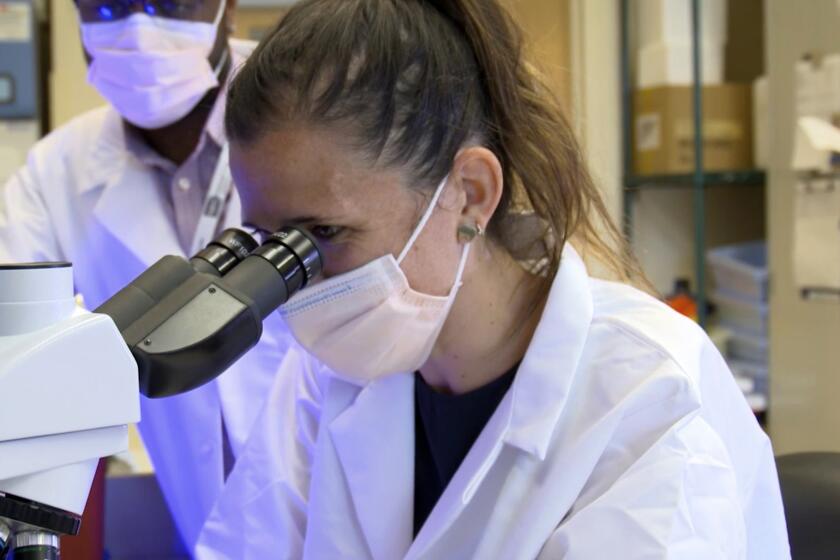Video: Camera-carrying alligators show off their hunting tactics
- Share via
Alligators do their best hunting in the early morning hours, say scientists who tramped out into muddy Florida wetlands and strapped cameras onto the giant reptiles’ backs.
The findings, published in the journal PLOS One, reveals once-obscure aspects of the lives of the animals by taking the alligator’s-eye view.
Alligators and crocodiles, known together as crocodilians, are found throughout the southeastern United States. Scientists have studied their hunting and eating habits for years (a recent study even found that these cunning predators may actually use sticks to lure birds to their doom).
“Top predators, particularly crocodilians, can have pretty important impacts on the rest of the food web,” said lead author James Nifong, a crocodilian biologist at the University of Florida in Gainesville.
That said, much of their hunting tactics remain obscure to researchers. That’s because it’s harder to track alligators at night, or under the dark, murky waters of the marshes and estuaries they inhabit.
To find out what was going on under the cover of night and water, the scientists teamed up with National Geographic’s Crittercam department and harnessed the devices to 15 American alligators. It was no easy task: The researchers had to snag each alligator, hold it still, pin its jaws shut and loop the camera’s harness around the body of the struggling beast.
“You tape their mouth shut, usually you’ll just put body weight on top of them, and you cover their eyes up so they’re not stressed out … sometimes it takes two or three people to hold them down,” said Nifong, who said he’s wrangled over 1,000 alligators, from little babies to 12-foot monsters. (The alligators nabbed for this study were roughly 7 to 10 feet long.) “You always have to be on your toes.”
These cameras, mounted like a backpack between the shoulder blades, showcased unprecedented views from the alligator’s perspective, whether in day or night, whether under water or above it. At a predetermined time, the harness would automatically separate and the camera would float to the top of the water, sending out a radio signal that the researchers could use to track it down.
As it turned out, the alligators were hunting relatively more during the night and early morning hours and relatively less during the day and evening. Their best successes were in the early morning hours, between about 4 and 9 a.m. They were also twice as successful when they were attacking prey while submerged under water than when they were above it.
And while alligators may have a popular reputation as big-meal, big-game hunters, in fact they tended to nosh constantly on smaller fare – shrimp, crabs, fish – roughly once every two hours.
The findings provide fresh insight into the reptiles’ dining habits “that have never been observed from the point of view of the alligators,” Nifong said.
ALSO:
Scary smart! Crocodiles use sticks to lure prey
Happy feet? These penguins do the wave to stay warm
Why do birds fly in a V? Endangered ibis reveals amazing secret
To fix holes in infants’ hearts, scientists create glue like worms






